Mountain Quail

Lifespan
5-7 years
Height
15-20 cm
Length
25-30 cm
Quail Ratio
1 Male to 1 Females
Mountain quail (Oreortyx pictus) are a unique and visually striking species native to the mountainous regions of the western United States. Known for their distinctive appearance and behaviors, they can make intriguing pets, but they require specific care to thrive in captivity.
Mountain Quail Call (Male Call)
Physical Characteristics
How many females to a male
Mountain quails are monogamous and territorial. Keeping them in pairs prevents aggressive behaviors and supports their natural breeding habits, leading to better reproductive outcomes.
Size
Mountain quail are medium-sized birds, measuring 25-30 cm (10-12 inches) in length and about 15-20 cm (6-8 inches) in height. They typically weigh between 150-200 grams (5.3-7.1 ounces).
Appearance
They have a striking appearance with a distinctive topknot of feathers, and their coloration includes a mix of brown, gray, and black with a characteristic white stripe along their neck.
Lifespan
Mountain quail can live for 5-7 years in captivity with proper care.
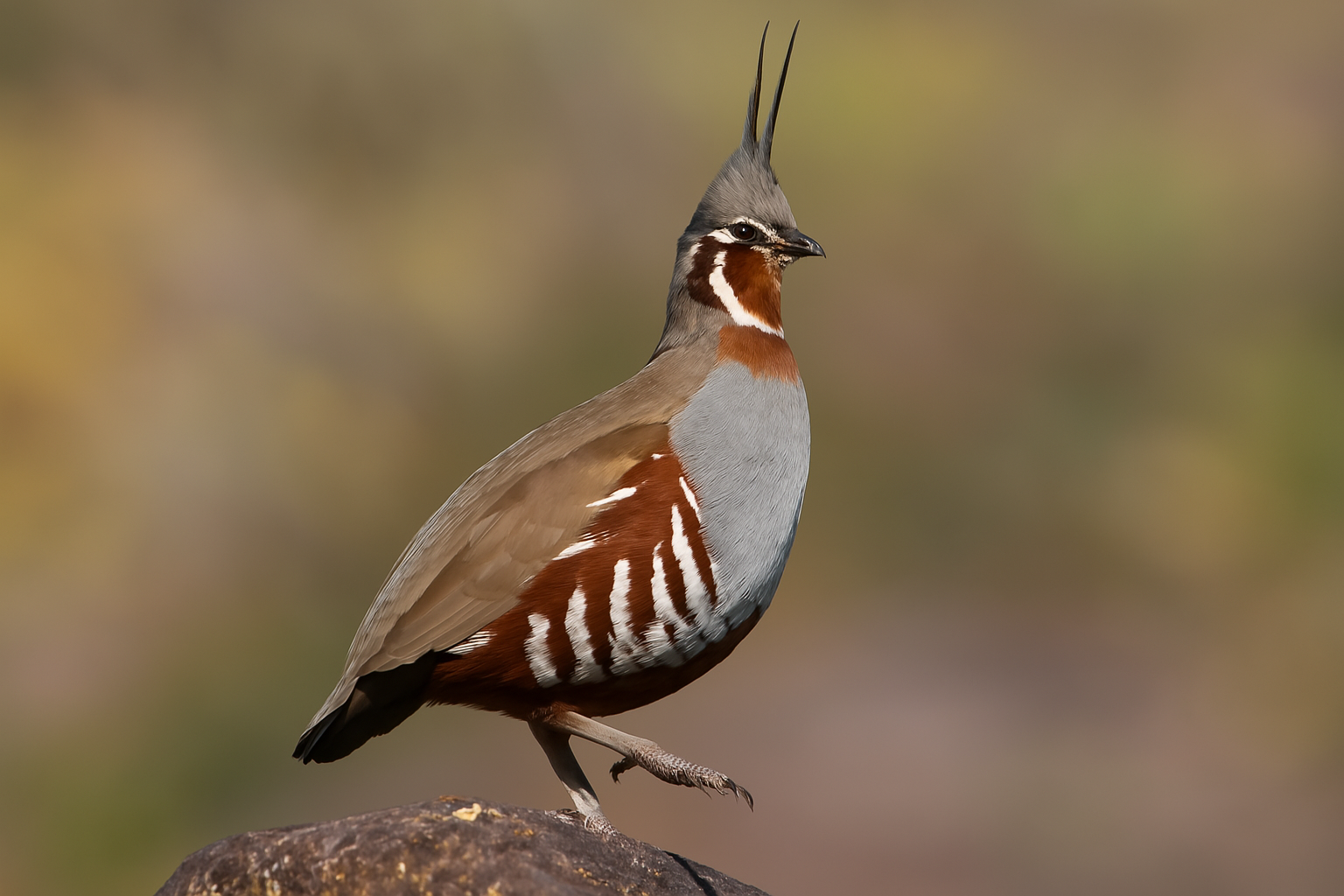
Habitat
Size of habitat
Provide a large, secure aviary or enclosure with ample space for foraging and exercise. They need vertical space as well, due to their natural behavior of climbing and exploring.
Substrate
Use soft bedding material such as straw, hay, or wood shavings to provide comfort and facilitate natural behaviors like scratching and dust bathing.
Shelter
Ensure the enclosure has sheltered areas to protect them from harsh weather and give them a sense of security.
Dust Bathing
Provide a container of sand or fine dust for dust bathing, which helps keep their feathers clean and free of parasites.
Protection
Make sure the enclosure is predator-proof and has a solid roof to prevent escape and protect from predators.
Diet
Food
Offer a high-quality game bird feed or quail mix, supplemented with seeds, grains, and fresh vegetables. They also benefit from occasional live insects for protein.
Protein
Occasionally provide mealworms, insects, or boiled eggs for additional protein.
Water
Fresh, clean water should be available at all times
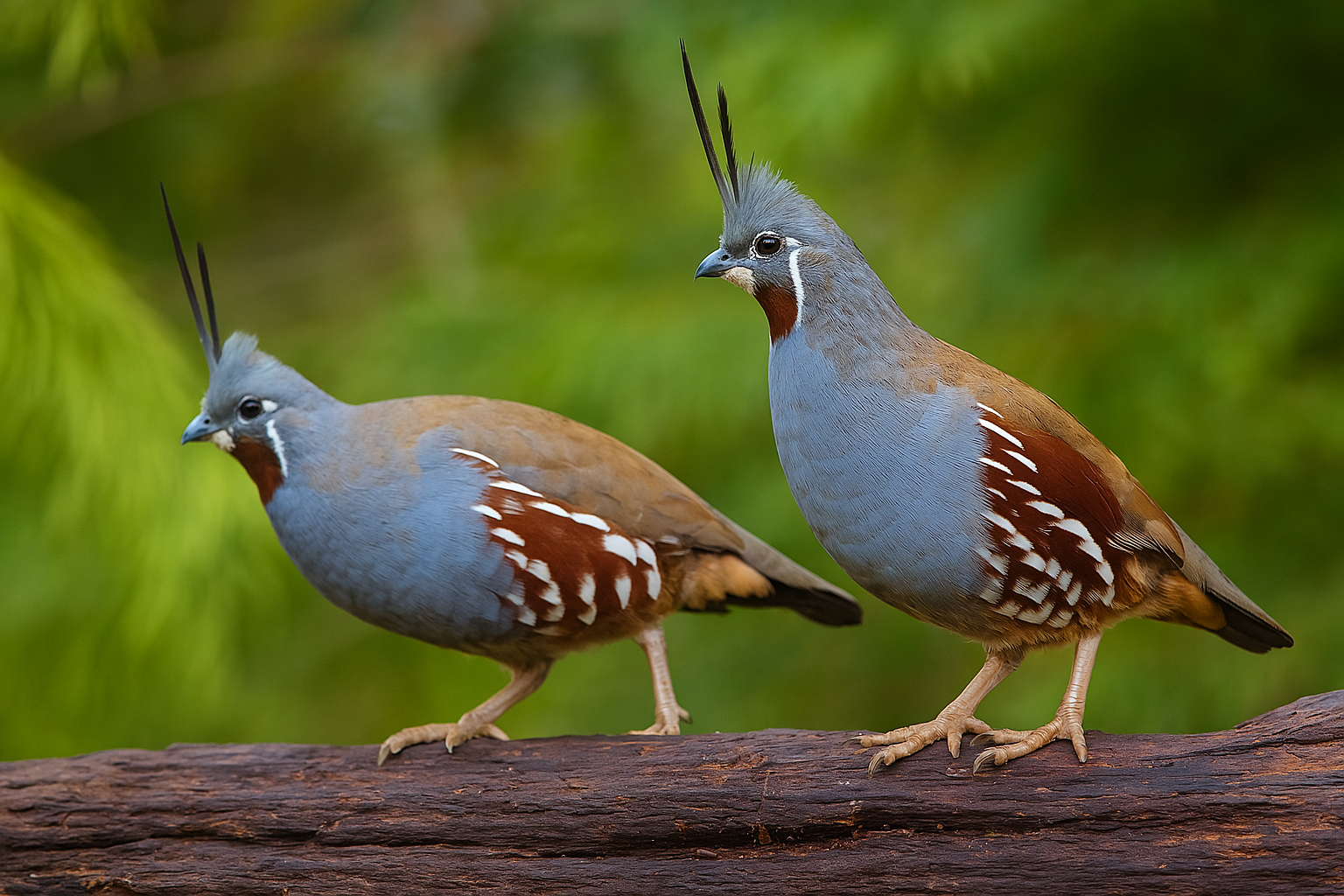
Social Behavior
Mountain quail are social birds that prefer to live in pairs or small groups. They may become stressed or lonely if kept alone.
Activity
They are active and curious, requiring enrichment such as perches, hiding spots, and objects to explore.
Handling
Mountain quail are naturally shy and reserved around humans. While they can get used to their caretakers with time, they prefer minimal handling and are better suited for observation. They thrive best in environments where they can interact with their own kind rather than relying on human interaction.
They are naturally shy and prefer to keep their distance. While they may become more accustomed to their caretakers over time, they are not likely to form strong bonds or show loyalty in the way some other birds or pets might.
Health
Clean Environment
Regularly clean the enclosure, food, and water containers to prevent bacterial growth and infections.
Health Monitoring
Watch for signs of illness such as lethargy, changes in eating habits, or abnormal droppings. Consult an avian veterinarian if needed.
History
Mountain quails (Oreortyx pictus) are native to the mountainous regions of the western United States, particularly in California, Oregon, and parts of Nevada. These birds are the largest species of quail in North America and are easily recognized by their distinctive topknot of feathers.
Role in Ecosystems
Historically, mountain quails have played a vital role in the ecosystems of the rugged terrains they inhabit. They thrive in dense forests, chaparral, and shrublands, and are highly adaptable, living at elevations ranging from sea level to over 3,000 meters (about 10,000 feet).
Mountain quails are less commonly kept in captivity compared to other quail species. Their shy and elusive nature makes them challenging to domesticate. They are primarily known as game birds and are valued more for their natural beauty and hunting appeal than for being pets.
Modern Interest
In recent years, mountain quails have attracted the interest of aviculturists and bird enthusiasts who appreciate their unique characteristics. Despite this, they are still more commonly found in the wild due to their specific habitat needs and less sociable nature.
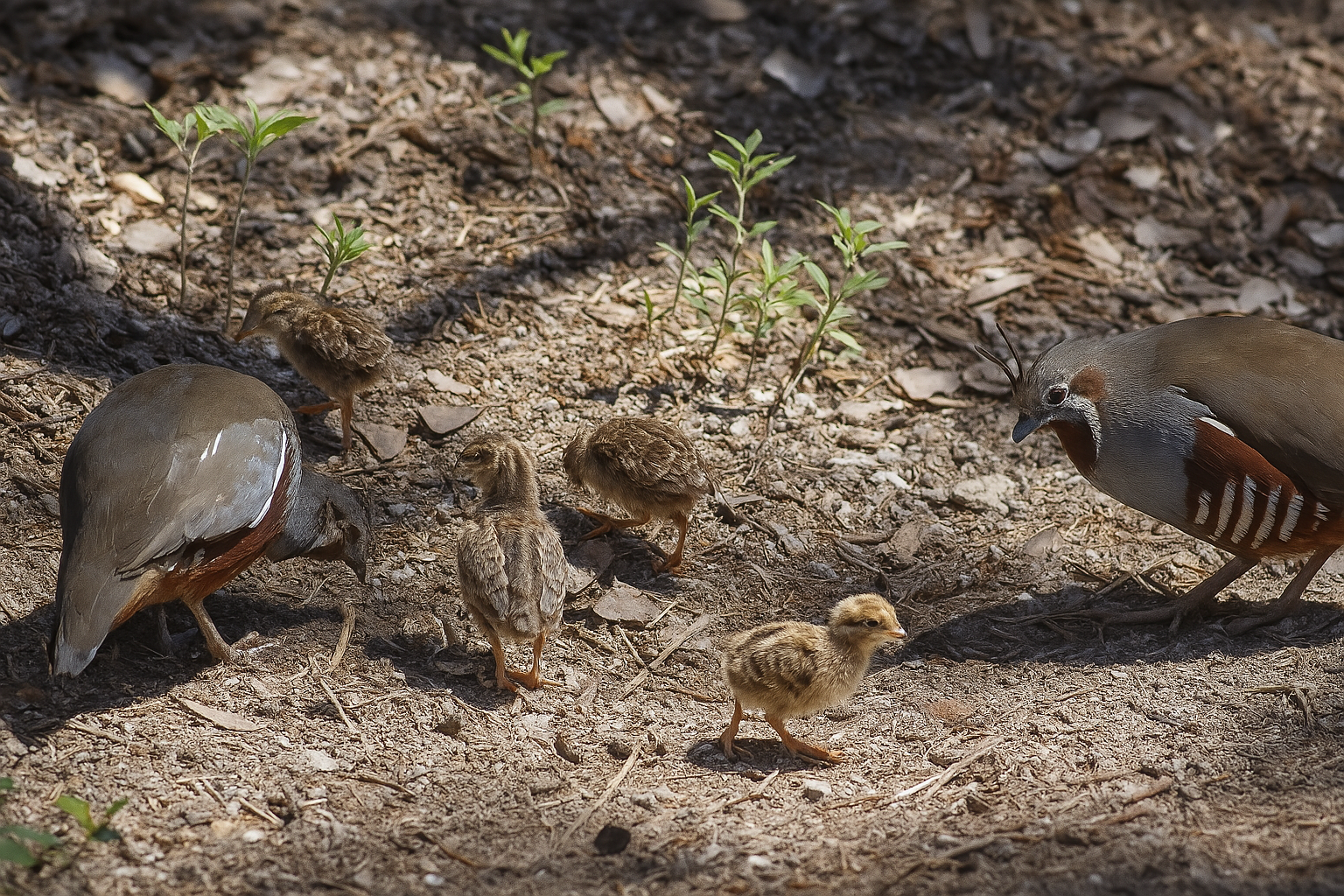
Breeding
Breeding Season
In the wild, Mountain quail breed in the spring and early summer. In captivity, you may need to simulate seasonal changes to encourage breeding.
Nesting
Mountain quails nest on the ground, using natural materials like leaves and grass to build a hidden, secure nest. The female lays 8-12 pale cream to light brown eggs, which she incubates for about 23-24 days. Chicks hatch precocial, able to walk and forage shortly after birth.
Quail Chick Care
Brooder Setup
Temperature: Keep chicks warm with a brooder set at 37°C (99°F) for the first week, gradually reducing to 24°C (75°F) by 4 weeks.
Feeding
Start with a high-protein game bird starter feed. As they grow, introduce finely chopped greens and insects.
Feeder and Waterer
Use shallow feeders and waterers to prevent chicks from drowning. Marbles or pebbles can be placed in water dishes to keep chicks safe.
Outdoor Transition
Begin introducing chicks to outdoor conditions at around 6-8 weeks, ensuring they have shelter and protection from predators.
Joining the adults
Integration with Adults
Chicks can join adult quails around 10-12 weeks of age, once they are fully feathered and able to fend for themselves. Monitor integration to ensure they are accepted by the group
Observe Behavior
Watch for signs of aggression or bullying from the adults. If the chicks are significantly smaller or weaker, they may need more time before integration.
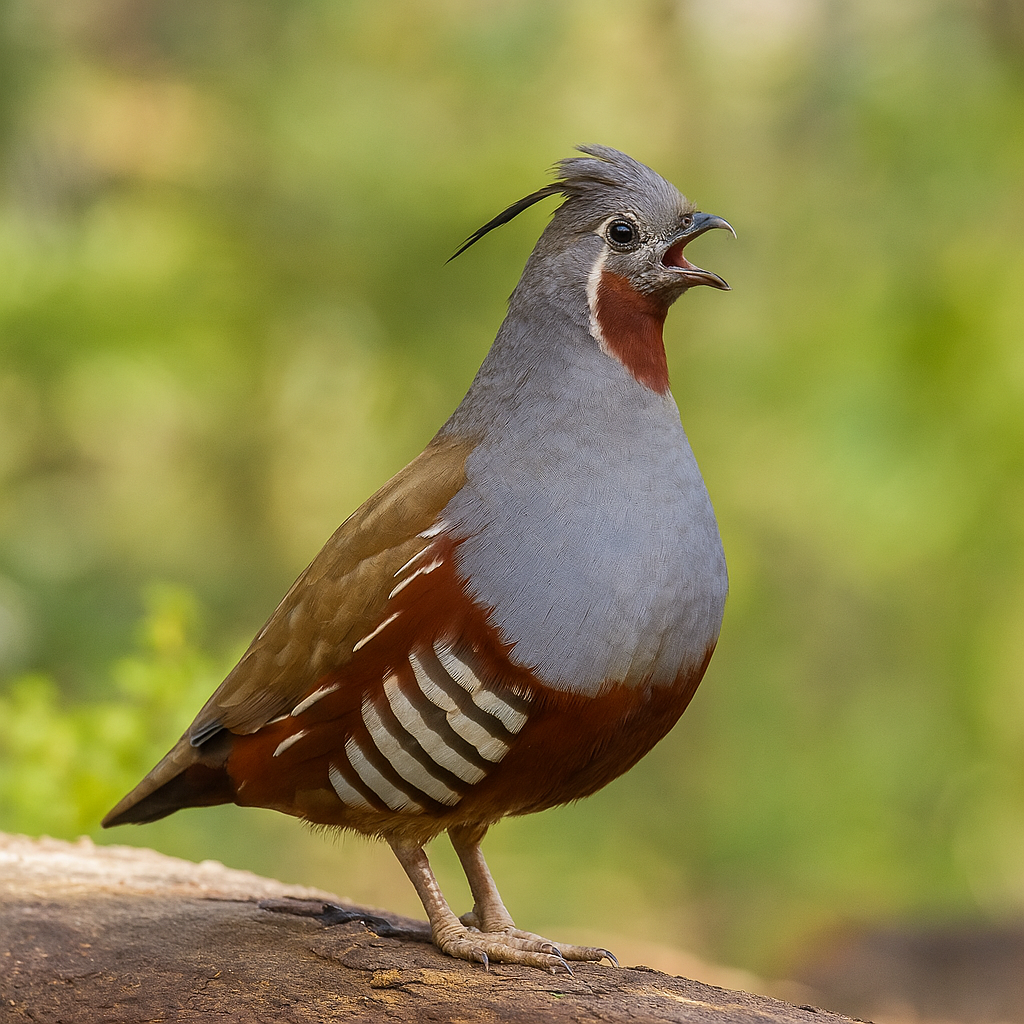
Fun Fact
The Mountain Quail’s tall head plume reveals its mood. When the plume leans back, the bird is usually calm—feeding or resting, much like a dog with its ears down. When the plume stands upright, it signals alertness or agitation.
In this article
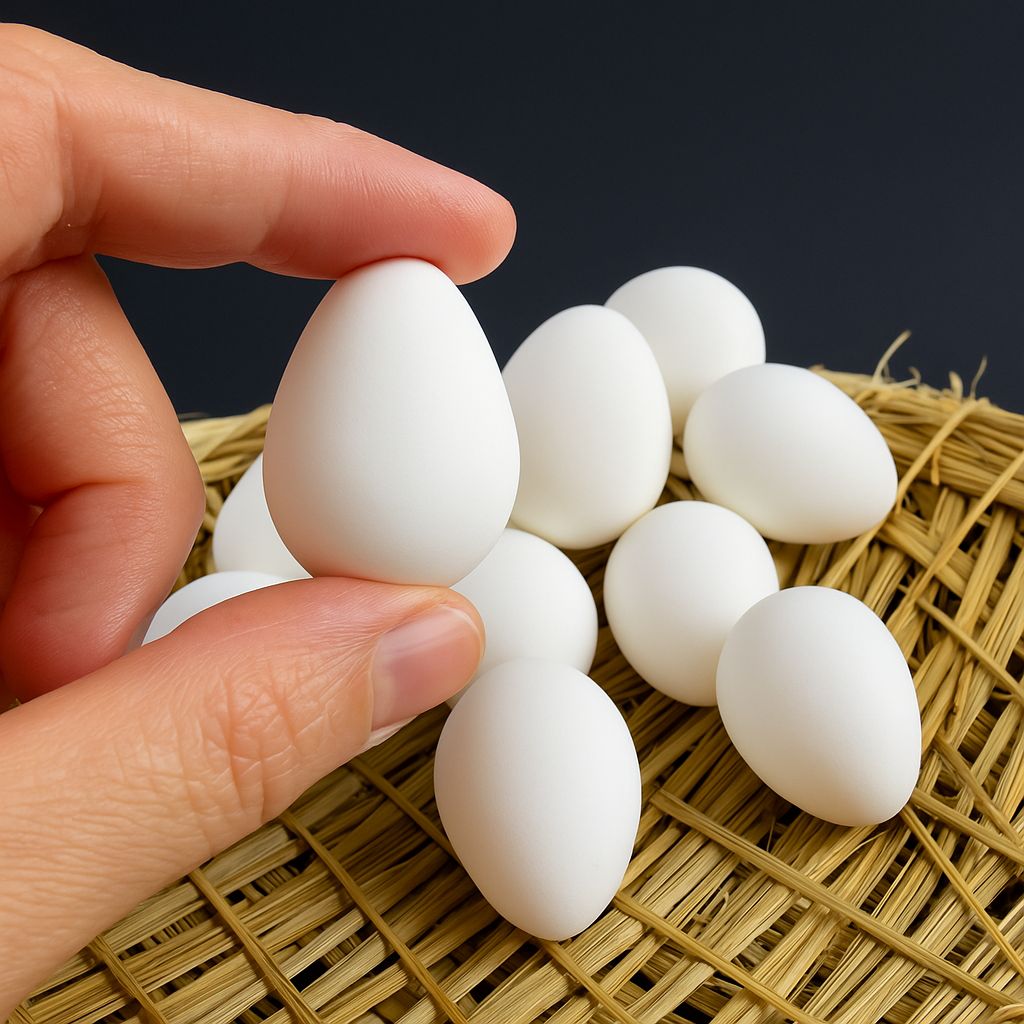
Eggs
Mountain quail eggs are small, smooth, and typically white or very pale cream in color, lacking the speckled patterns seen in other quail species. They are about 3 cm (1.2 inches) in length and weigh around 10-12 grams, with a clean, simple appearance that contrasts beautifully with their natural nesting environments.
Legal Considerations
Check local laws and regulations regarding the keeping of quail. Some areas may have specific requirements or restrictions.
Permits
In some regions, permits may be required to keep or breed quail.

Montezuma Quail
Montezuma Quail, native to Mexico and the southwestern US, are prized for their unique, camouflaged plumage and subtle crest. These naturally shy and solitary birds are challenging to breed in captivity, and while they require careful health monitoring, their distinctive beauty appeals to experienced aviculturists.
Read more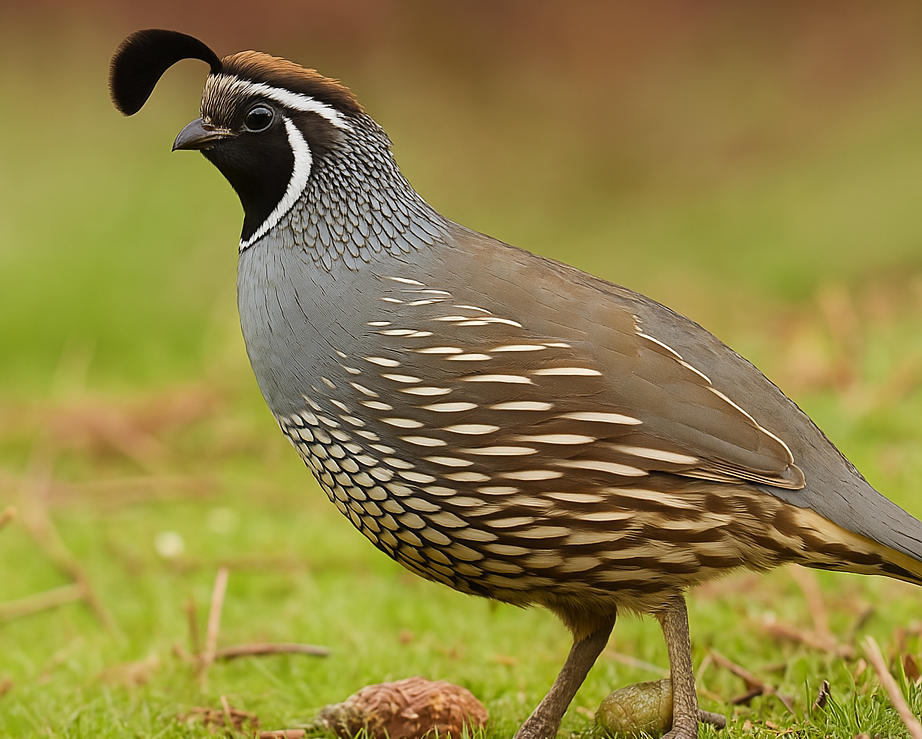
California Quail
The California Quail (Callipepla californica) is a charming and distinctive bird known for its plump body, beautiful plumage, and characteristic head plume, often referred to as a "topknot." These birds are native to the western United States but can be kept as pets with proper care and attention. Here's a comprehensive look at keeping California Quail as pets
Read more
Jumbo Celadon Quail
Jumbo Celadon Quail, also known as Coturnix quail, are a popular breed among poultry enthusiasts due to their distinctive blue or light green eggs, larger size, and efficient egg production. They are a selectively bred variety of the standard Coturnix quail, known for their increased body weight and unique egg coloration.
Read more
Bobwhite Quail
The Bobwhite Quail, also known as the Northern Bobwhite or Virginia Quail (Colinus virginianus), known for their distinctive call and charming appearance, can make unique and interesting pets. Bobwhite quail Have long been popular in North America. They require specific care and habitat conditions to thrive in a domestic setting.
Read more